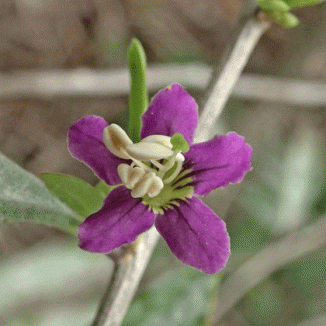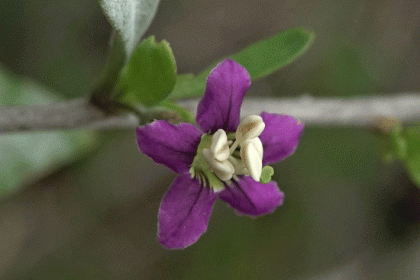This is a deciduous, suckering shrub that grows to about 3 metres tall, has arching, grey, spiny stems and would seem to be found mainly in the south-east of Ireland with scattered records of its existence in a small area of Co Kerry. It has untoothed, lanceolate leaves which are widest at their middle, grey-green and alternate and it bears extremely attractive flowers in the leaf axils. These begin their blooming as purple flowers but then they fade through a rose colour to brown and then beige. The flowers have 5 lobes, occasionally 6, with dark, unbranched veins running through the purple lobes into the white centre of each flower. Creamy stamens protrude from the centre with large cream anthers. It flowers from May through to September. The fruit of this species is an oval, red berry. It is not a native species but was introduced into these islands from China. It belongs to the Nightshade or Solanaceae family.
I saw this species at Duncannon, County Waterford in 2018 after being told about it by Paul Green, BSBI Vice-county Recorder for Wexford and Waterford.
If you are satisfied you have correctly identified this plant, please submit your sighting to the National Biodiversity Data Centre




